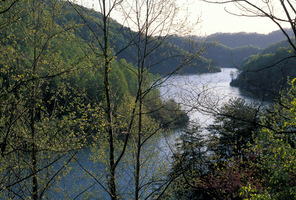 | Back to e-WV
| Back to e-WV
 The West Virginia Encyclopedia
The West Virginia Encyclopedia
 | Back to e-WV
| Back to e-WV
 The West Virginia Encyclopedia
The West Virginia Encyclopedia








Mingo County, created on January 30, 1895, from the southern part of Logan County, is the youngest county in West Virginia. The county lies in the heart of Appalachia. It is named for the Mingo Indians, for whose best-known chief, Logan, the mother county was named.
Williamson, the county seat of Mingo County, boomed with the growth of the development of the local coalfields. Williamson is home to the Coal House, constructed in 1933 from 65 tons of coal. There is a campus of Southern West Virginia Community and Technical College in Williamson.
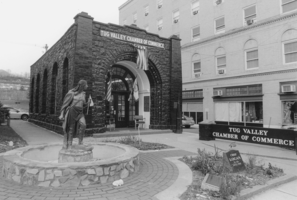
Matewan was the site of Matewan Massacre, often cited as the opening of the West Virginia Mine War of 1920–21.
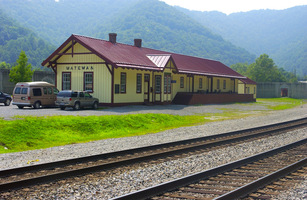
Laurel Lake Wildlife Management Area was established in 1960 when Laurel Lake was constructed. The lake has 29 acres of surface water for fishing, swimming, and boating.
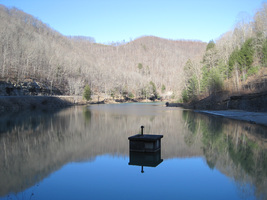
The Dingess Tunnel is a 3,327-foot tunnel that was built for the original Twelvepole Creek route of the Norfolk & Western (now Norfolk Southern) Railroad in 1892.
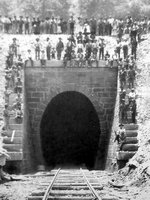
The Tug Fork forms the southwestern border of West Virginia for nearly 90 miles, flowing between the West Virginia counties of Mingo and Wayne and neighboring counties in Virginia and Kentucky.
The Guyandotte River is formed by the junction of Winding Gulf and Stonecoal creeks in Raleigh County and flows in a northwesterly direction to its confluence with the Ohio River at Huntington.
R. D. Bailey Lake is located on the Guyandotte River near Justice, on the Wyoming-Mingo county line. Named in honor of the late Judge R. D. Bailey, the lake provides flood protection for the lower Guyandotte River basin, including the city of Huntington.
